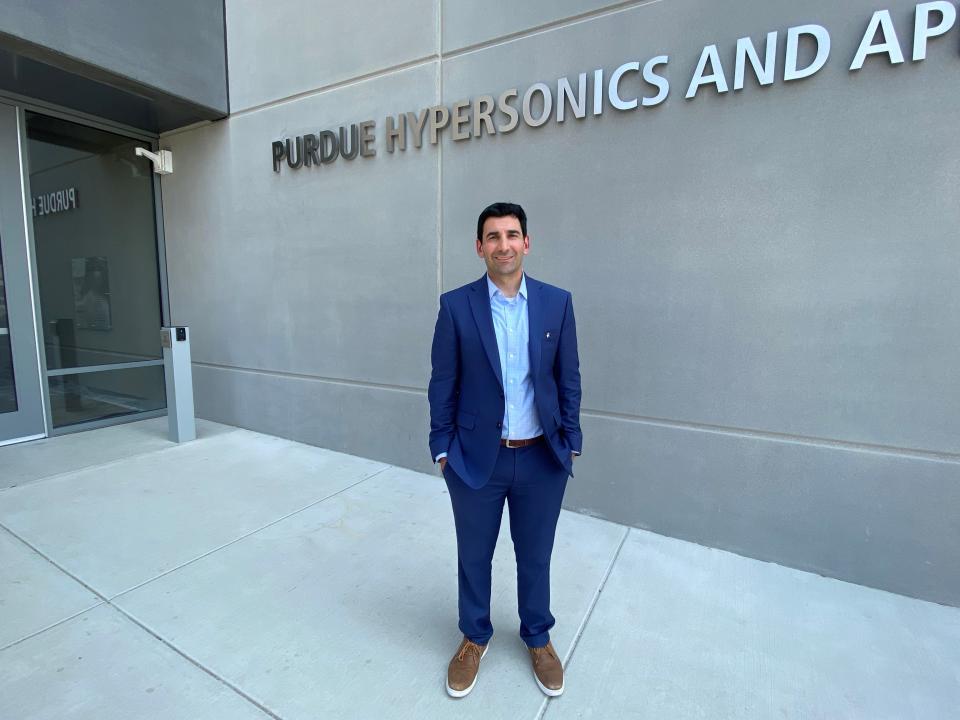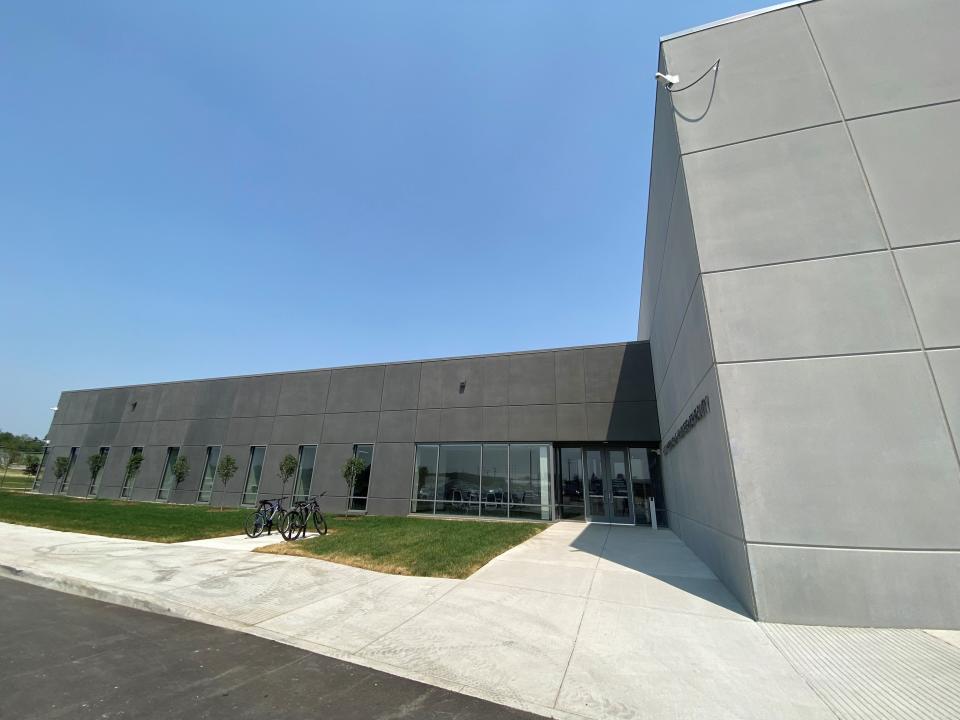'Remarkable': Leader in hypersonics explains Purdue's new Mach 8 wind tunnel
WEST LAFAYETTE, Ind. − In addition to being called the "Cradle of Astronauts," Purdue University could also be the cradle of hypersonics, with its history of wind tunnel expertise preceding the opening of a new facility.
In celebration of the Hypersonics and Applied Research Facility's grand opening on the Purdue campus, a professor spoke with local media about its importance to Indiana and the nation.
Mike Sangid, a professor in aeronautics and astronautics at Purdue as well as the executive director of the Hypersonics Advanced Manufacturing Technology Center within the Purdue Applied Research Institute, answered questions regarding the new facility's purpose, its importance and more.
In simple terms, what is this new facility?
"This building is truly remarkable," Sangid said. "First, it allows Purdue and (PARI) to work closer with the industry and the government stakeholders. And then second, there's three main components of this building. One aspect is a wind tunnel where air travels more than five times the speed of sound and flows over hypersonic components. That happens at lower temperatures in very low-disturbance flows.

"The second is higher temperature … flows. And they're short durations, but they can go really from Mach 12 to Mach 25+, so that means 12-25 times the speed of sound. And then the third aspect is really advancing high temperature materials and manufacturing prototypes. So being able to print materials at a quicker pace and reduce the time and cost to create prototypes for hypersonic components."
How many of these types of wind tunnels exist in the world?
"The Mach eight quiet wind tunnel is going to be the only wind tunnel in the world really, of that type," Sangid said. "The Mach six quiet wind tunnel is one of two operational right now (and is) the largest in the U.S."
Why was Purdue chosen to be home to these wind tunnels?
"In terms of these wind tunnels, Purdue has a storied history here," Sangid said. "It was a creator of the Mach six quiet wind tunnel. … That really served as the initial foundation for the Mach eight wind tunnel. … Purdue has the expertise and, thanks to this building, the infrastructure, to house that wind tunnel."
Are there any government affiliates that Purdue is going to be working with while studying this field?
"Yes, so with the Hypersonics Advanced Manufacturing Technology Center ... we currently have a contract with the Office of the Secretary of Defense Manufacturing Science and Technology Program."

What are some of the main goals to be accomplished at this new facility?
"Really bridging the scale between university research and test infrastructure for the government," Sangid said. "So, this reduces the valley of death. So being able to take university research, the university development aspect, and deliver it to the government. The other aspect is, the U.S. is in need for testing infrastructure. So this fills a niche in a lot of unique capabilities for testing infrastructure."
Purdue has become a leader in various STEM fields, what do you think this says about the university?
"Purdue is really leaning in with not only STEM activities and engineering activities, but really (with) Department of Defense topics (as well)," Sangid said. "Whether it's microelectronics … hypersonics, cybersecurity, Purdue is really filling a necessary need for research that's critical for the Department of Defense."
Will students have hands-on experiences at this facility?
"The students are really our front line," Sangid said. "They have a lot of hands-on experiential learning activities. And really, this is a unique facility for workforce development so the students come out of their research with the necessary skills to make an immediate impact in the industry."
What impact will this facility have on the Greater Lafayette area?
"I think this is gonna have a tremendous impact," Sangid said. "... We're really building out our hypersonic ecosystem. We have several labs and facilities here. This particular facility was made with the idea that we can more directly work with the industry in the fact that we'll have industry co-located in this facility. So that means more companies coming to West Lafayette to work in a facility like this and live here. So that also means jobs and (further) development of our area."
What are you most looking forward to coming out of this facility?
"I would say impact," Sangid said. "And impact's always hard to judge, but having a lasting and memorable impact on the Department of Defense. So that means that we're safer locally, meaning a lot of the technologies and tests directly impact critical safety needs and national security and defense."
Margaret Christopherson is a reporter for the Journal & Courier. Email her at mchristopherson@jconline.com and follow her on Twitter @MargaretJC2.
This article originally appeared on Lafayette Journal & Courier: New Purdue Mach 8 wind tunnel ready to advance field of hypersonics

